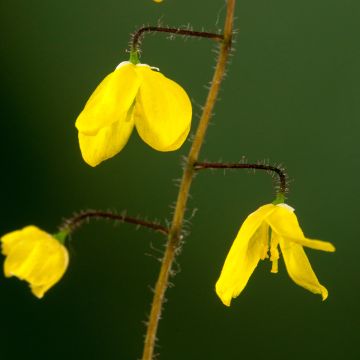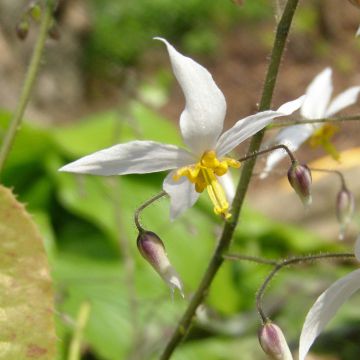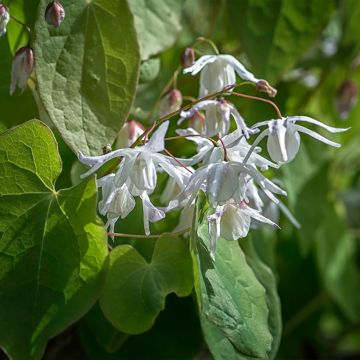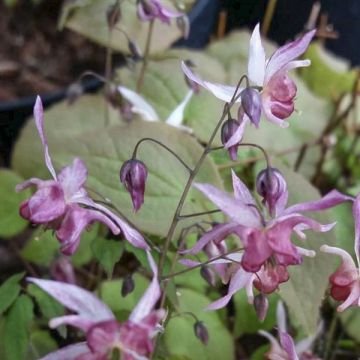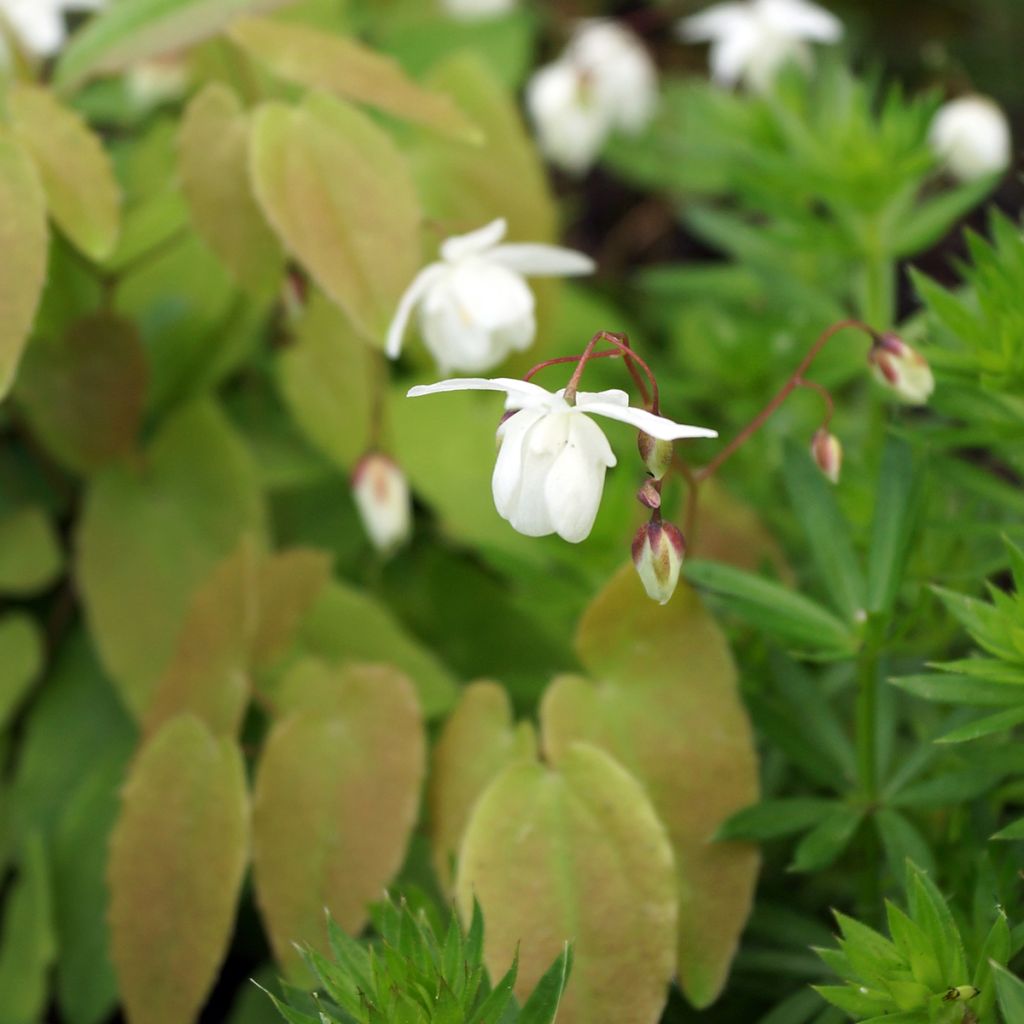

Epimedium x youngianum Niveum - Barrenwort
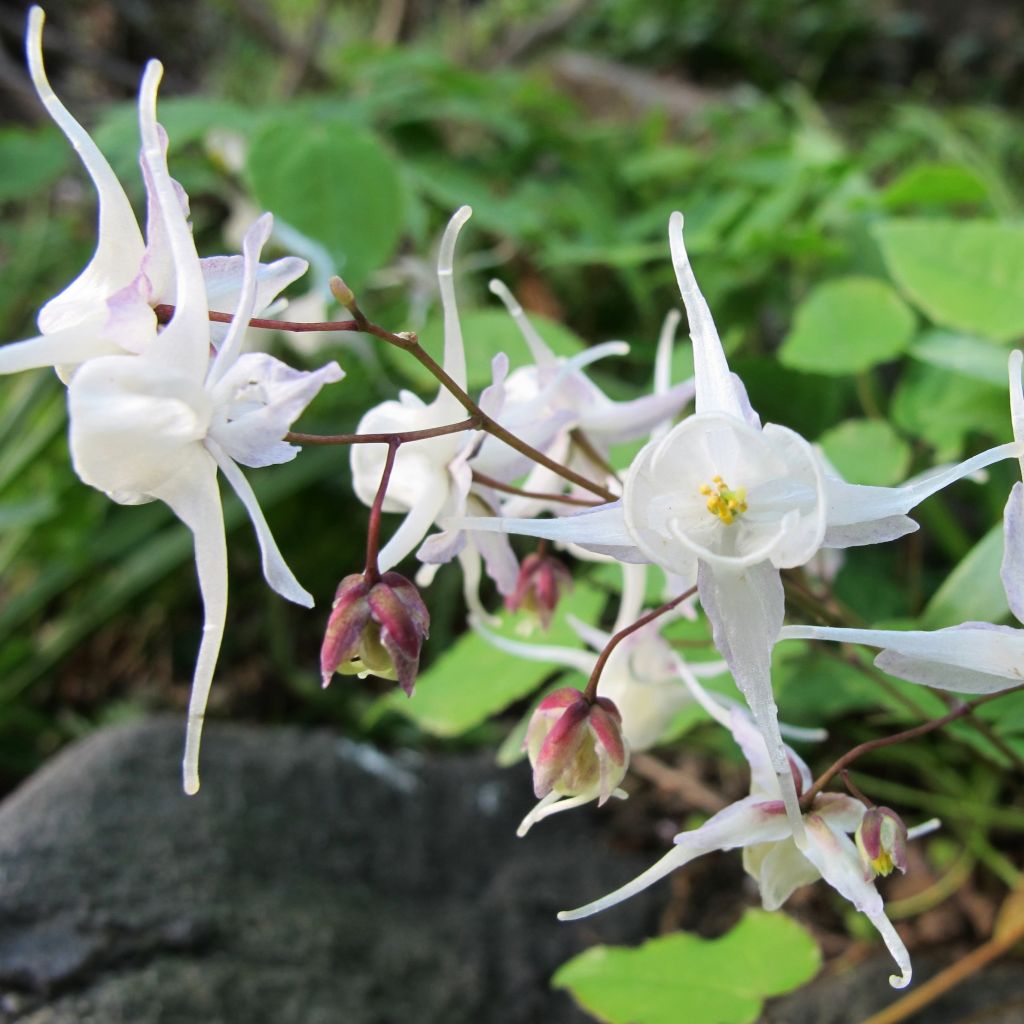

Epimedium x youngianum Niveum - Barrenwort
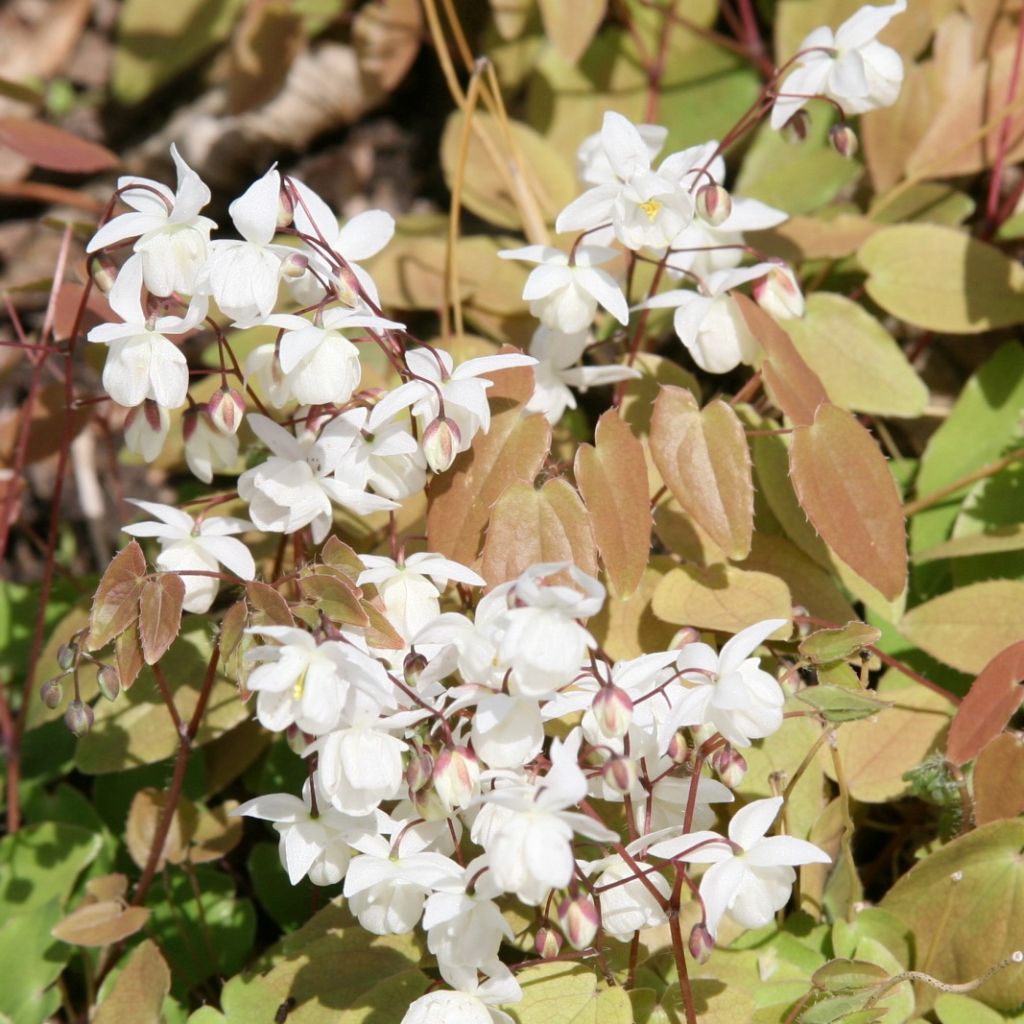

Epimedium x youngianum Niveum - Barrenwort


Epimedium x youngianum Niveum - Barrenwort
Epimedium x youngianum Niveum - Barrenwort
Epimedium x youngianum Niveum
Barrenwort
This item cannot be shipped to the selected country
Delivery charge from €5.90
More information
Schedule delivery date,
and select date in basket
This plant carries a 12 months recovery warranty
More information
We guarantee the quality of our plants for a full growing cycle, and will replace at our expense any plant that fails to recover under normal climatic and planting conditions.
From €5.90 for pickup delivery and €6.90 for home delivery
Express home delivery from €8.90.
Does this plant fit my garden?
Set up your Plantfit profile →
Description
Epimedium x youngianum 'Niveum' is a non-rhizomatous variety, forming pretty little neat clumps from spring to autumn. This deciduous perennial appears in spring, with its beautiful juvenile foliage coloured in bronze and purple, turning green as the days go by, while clusters of pure white flowers rise up, evoking a cloud of tiny columbines. Forming beautiful cushions with changing colours, it is also one of the easiest dwarf forms to grow. Plant in shaded or semi-shaded areas of the garden, in moist soil.
The Epimedium x youngianum 'Niveum' is a horticultural cultivar descended from a spontaneous hybrid resulting from the cross-breeding of two Japanese species, E. diphyllum and E. grandiflorum. This charming hybrid has a slower growth than other species and varieties, and does not have a rhizomatous root system allowing it to spread laterally. At maturity, this epimedium forms a cushion of about 30 cm (12in) in all directions. Its foliage, semi-evergreen to deciduous depending on the climate, is composed of small ovate, asymmetrical leaves with changing colours. Initially shaded in purple or violet, sometimes tinged with bronze, they become a lovely pale green, which appears bright in shade. These leaves seem to be suspended in the air, as the brown-purple petioles that carry them are very thin. This variety forms small pure white flowers in April-May, bright as stars, with small spurs, grouped in light clusters above the foliage.
Epimediums are beautiful shade plants, to be grown in groups or in a large shaded rockery, preferably along a path to fully enjoy their true beauty. They all withstand temperatures down to -13°C (8.6°F) without any protection. Western species that are very cold-resistant tolerate difficult conditions, such as living in dense shade under trees, in very dry soil, or in moist clay soil. Asian species like Epimedium youngianum 'Niveum' prefer, like hostas, heucheras, and primroses, a soil that remains moist to wet in summer, well-drained, rich in humus, without limestone, and can also tolerate dense shade. They all grow relatively slowly, but they live for many years in place, without any special care.
Report an error about the product description
Epimedium x youngianum Niveum - Barrenwort in pictures
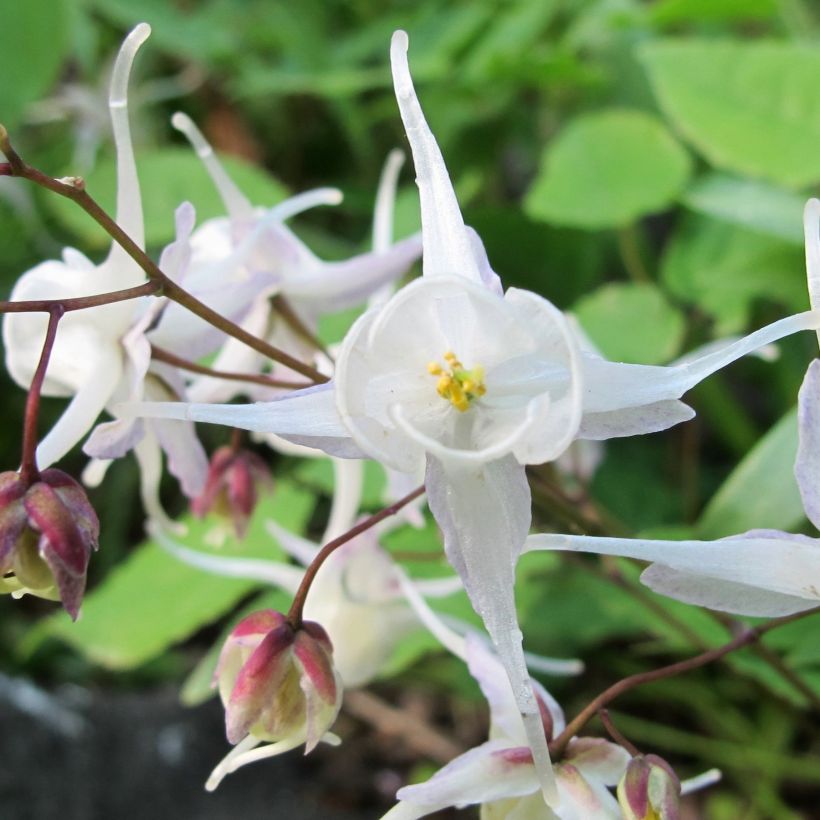



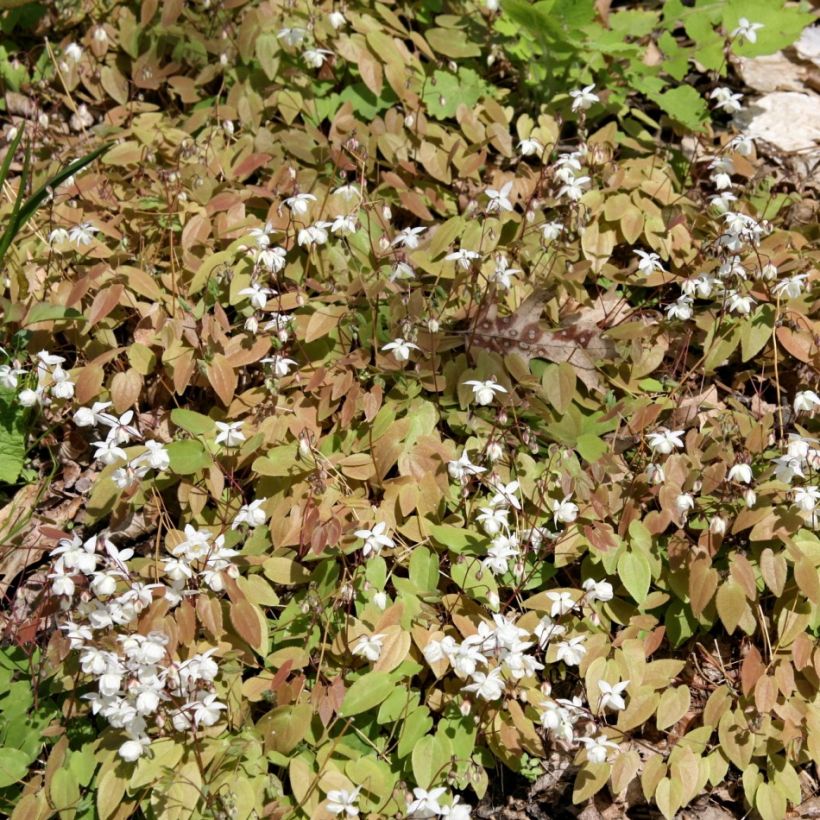

Flowering
Foliage
Plant habit
Botanical data
Epimedium
x youngianum
Niveum
Berberidaceae
Barrenwort
Cultivar or hybrid
Other Epimedium - Barrenwort
Planting and care
Epimedium youngianum and its varieties are grown in shade or partial shade, in a humus-rich, neutral to acidic soil, which is always damp. A moist and shaded rock garden will suit these plants well. They dislike limestone and soils that are too dry in summer, as well as harsh sun. Hardy below -15°C (5°F), their cultivation presents no problem under cool climates, where summers are humid.
Planting period
Intended location
Care
-
, onOrder confirmed
Reply from on Promesse de fleurs
Haven't found what you were looking for?
Hardiness is the lowest winter temperature a plant can endure without suffering serious damage or even dying. However, hardiness is affected by location (a sheltered area, such as a patio), protection (winter cover) and soil type (hardiness is improved by well-drained soil).

Photo Sharing Terms & Conditions
In order to encourage gardeners to interact and share their experiences, Promesse de fleurs offers various media enabling content to be uploaded onto its Site - in particular via the ‘Photo sharing’ module.
The User agrees to refrain from:
- Posting any content that is illegal, prejudicial, insulting, racist, inciteful to hatred, revisionist, contrary to public decency, that infringes on privacy or on the privacy rights of third parties, in particular the publicity rights of persons and goods, intellectual property rights, or the right to privacy.
- Submitting content on behalf of a third party;
- Impersonate the identity of a third party and/or publish any personal information about a third party;
In general, the User undertakes to refrain from any unethical behaviour.
All Content (in particular text, comments, files, images, photos, videos, creative works, etc.), which may be subject to property or intellectual property rights, image or other private rights, shall remain the property of the User, subject to the limited rights granted by the terms of the licence granted by Promesse de fleurs as stated below. Users are at liberty to publish or not to publish such Content on the Site, notably via the ‘Photo Sharing’ facility, and accept that this Content shall be made public and freely accessible, notably on the Internet.
Users further acknowledge, undertake to have ,and guarantee that they hold all necessary rights and permissions to publish such material on the Site, in particular with regard to the legislation in force pertaining to any privacy, property, intellectual property, image, or contractual rights, or rights of any other nature. By publishing such Content on the Site, Users acknowledge accepting full liability as publishers of the Content within the meaning of the law, and grant Promesse de fleurs, free of charge, an inclusive, worldwide licence for the said Content for the entire duration of its publication, including all reproduction, representation, up/downloading, displaying, performing, transmission, and storage rights.
Users also grant permission for their name to be linked to the Content and accept that this link may not always be made available.
By engaging in posting material, Users consent to their Content becoming automatically accessible on the Internet, in particular on other sites and/or blogs and/or web pages of the Promesse de fleurs site, including in particular social pages and the Promesse de fleurs catalogue.
Users may secure the removal of entrusted content free of charge by issuing a simple request via our contact form.
The flowering period indicated on our website applies to countries and regions located in USDA zone 8 (France, the United Kingdom, Ireland, the Netherlands, etc.)
It will vary according to where you live:
- In zones 9 to 10 (Italy, Spain, Greece, etc.), flowering will occur about 2 to 4 weeks earlier.
- In zones 6 to 7 (Germany, Poland, Slovenia, and lower mountainous regions), flowering will be delayed by 2 to 3 weeks.
- In zone 5 (Central Europe, Scandinavia), blooming will be delayed by 3 to 5 weeks.
In temperate climates, pruning of spring-flowering shrubs (forsythia, spireas, etc.) should be done just after flowering.
Pruning of summer-flowering shrubs (Indian Lilac, Perovskia, etc.) can be done in winter or spring.
In cold regions as well as with frost-sensitive plants, avoid pruning too early when severe frosts may still occur.
The planting period indicated on our website applies to countries and regions located in USDA zone 8 (France, United Kingdom, Ireland, Netherlands).
It will vary according to where you live:
- In Mediterranean zones (Marseille, Madrid, Milan, etc.), autumn and winter are the best planting periods.
- In continental zones (Strasbourg, Munich, Vienna, etc.), delay planting by 2 to 3 weeks in spring and bring it forward by 2 to 4 weeks in autumn.
- In mountainous regions (the Alps, Pyrenees, Carpathians, etc.), it is best to plant in late spring (May-June) or late summer (August-September).
The harvesting period indicated on our website applies to countries and regions in USDA zone 8 (France, England, Ireland, the Netherlands).
In colder areas (Scandinavia, Poland, Austria...) fruit and vegetable harvests are likely to be delayed by 3-4 weeks.
In warmer areas (Italy, Spain, Greece, etc.), harvesting will probably take place earlier, depending on weather conditions.
The sowing periods indicated on our website apply to countries and regions within USDA Zone 8 (France, UK, Ireland, Netherlands).
In colder areas (Scandinavia, Poland, Austria...), delay any outdoor sowing by 3-4 weeks, or sow under glass.
In warmer climes (Italy, Spain, Greece, etc.), bring outdoor sowing forward by a few weeks.


































